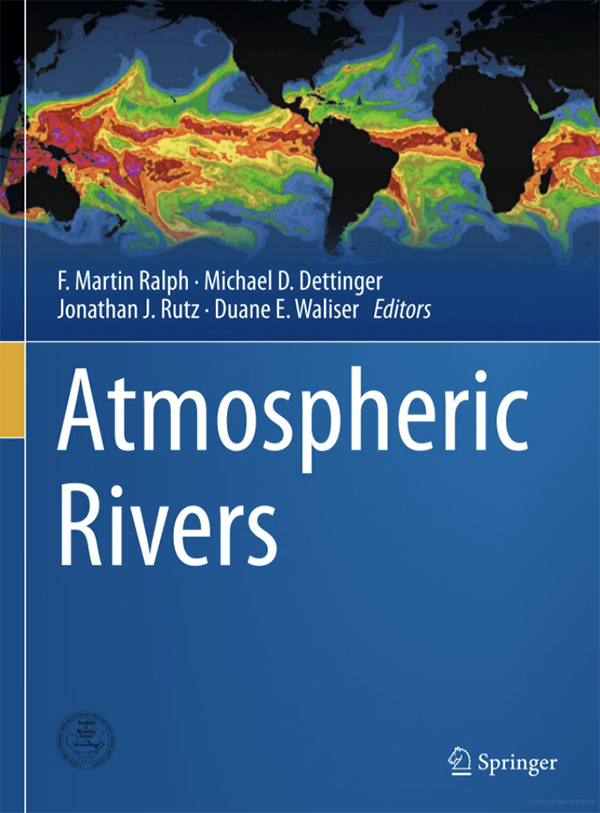Researchers co-author book on Atmospheric Rivers

Atmospheric Rivers (ARs) are narrow conveyor belts of concentrated moisture in the atmosphere, which can provide beneficial water supply and snowpack, and sometimes produce flooding rains that can disrupt travel and cause catastrophic damage to life and property. A new book, co-authored by several NOAA and CIRES scientists at PSL who have been at the forefront of research to observe and better understand ARs, summarizes research conducted over the last 20 years on this extreme weather phenomenon. The book also describes how ARs form, how scientists observe and predict them, their impacts, and the future of AR research and applications.
ARs are a global phenomenon requiring detection methods that can be used universally to understand their structure and evolution. With features that are often difficult to observe and predict, ARs can lead to enhanced and/or prolonged precipitation over a specific area or watershed that ultimately causes localized flooding to occur. Recent developments in AR research include a community-accepted definition of Atmospheric Rivers, which now exists in the AMS Glossary of Meteorology, and creation of an AR intensity scale akin to the Safir-Simpson wind scale for hurricanes. The scale takes into account the magnitude of water vapor transport in the AR as well as its duration, which can exacerbate the threat of flooding.
ARs can provide precipitation beneficial for water resources and recreation, but in other instances can pose hazards to society, such as flooding and debris flows. ARs also play important roles in the broader contexts of extratropical cyclones and climate projections. There are gaps in the scientific understanding of ARs and their impacts, underscoring the importance of continued investigation.
Learn More
PSL researchers that contributed to the book Atmospheric Rivers are Michael Alexander, Gilbert Compo, Kelly Mahoney, William Neff, Paul Neiman, Gary Wick, and Allen White.
Posted: August 24, 2020